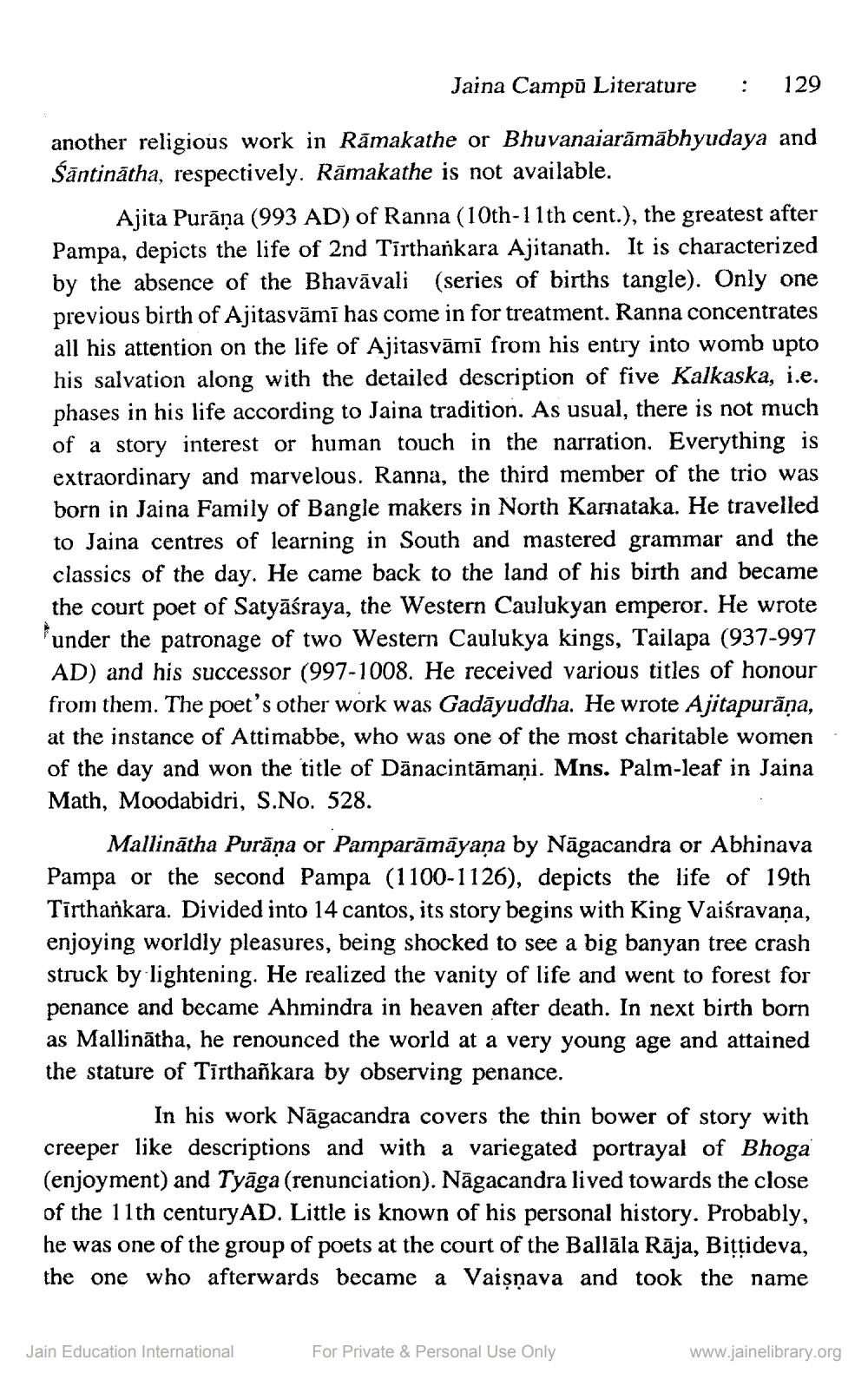________________
Jaina Campū Literature
:
129
another religious work in Rāmakathe or Bhuvanaiarāmābhyudaya and Šāntinātha, respectively. Rāmakathe is not available.
Ajita Purāņa (993 AD) of Ranna (10th-11th cent.), the greatest after Pampa, depicts the life of 2nd Tirthankara Ajitanath. It is characterized by the absence of the Bhavāvali (series of births tangle). Only one previous birth of Ajitasvāmī has come in for treatment. Ranna concentrates all his attention on the life of Ajitasvāmī from his entry into womb upto his salvation along with the detailed description of five Kalkaska, i.e. phases in his life according to Jaina tradition. As usual, there is not much of a story interest or human touch in the narration. Everything is extraordinary and marvelous. Ranna, the third member of the trio was born in Jaina Family of Bangle makers in North Karnataka. He travelled to Jaina centres of learning in South and mastered grammar and the classics of the day. He came back to the land of his birth and became the court poet of Satyāśraya, the Western Caulukyan emperor. He wrote under the patronage of two Western Caulukya kings, Tailapa (937-997 AD) and his successor (997-1008. He received various titles of honour from them. The poet's other work was Gadāyuddha. He wrote Ajitapurāņa, at the instance of Attimabbe, who was one of the most charitable women of the day and won the title of Dānacintāmaņi. Mns. Palm-leaf in Jaina Math, Moodabidri, S.No. 528.
Mallinātha Purāņa or Pamparāmāyaṇa by Nāgacandra or Abhinava Pampa or the second Pampa (1100-1126), depicts the life of 19th Tirthankara. Divided into 14 cantos, its story begins with King Vaiśravana, enjoying worldly pleasures, being shocked to see a big banyan tree crash struck by lightening. He realized the vanity of life and went to forest for penance and became Ahmindra in heaven after death. In next birth born as Mallinātha, he renounced the world at a very young age and attained the stature of Tīrthañkara by observing penance.
In his work Nāgacandra covers the thin bower of story with creeper like descriptions and with a variegated portrayal of Bhoga (enjoyment) and Tyāga (renunciation). Nāgacandra lived towards the close of the 11th centuryAD. Little is known of his personal history. Probably, he was one of the group of poets at the court of the Ballāla Rāja, Bittideva, the one who afterwards became a Vaisnava and took the name
Jain Education International
For Private & Personal Use Only
www.jainelibrary.org




